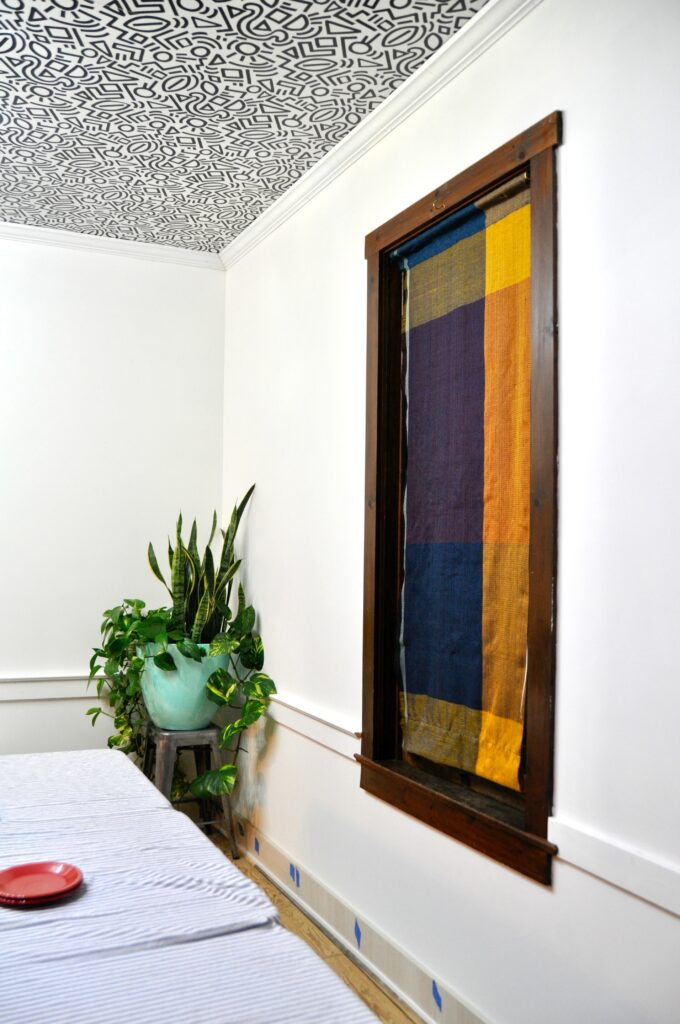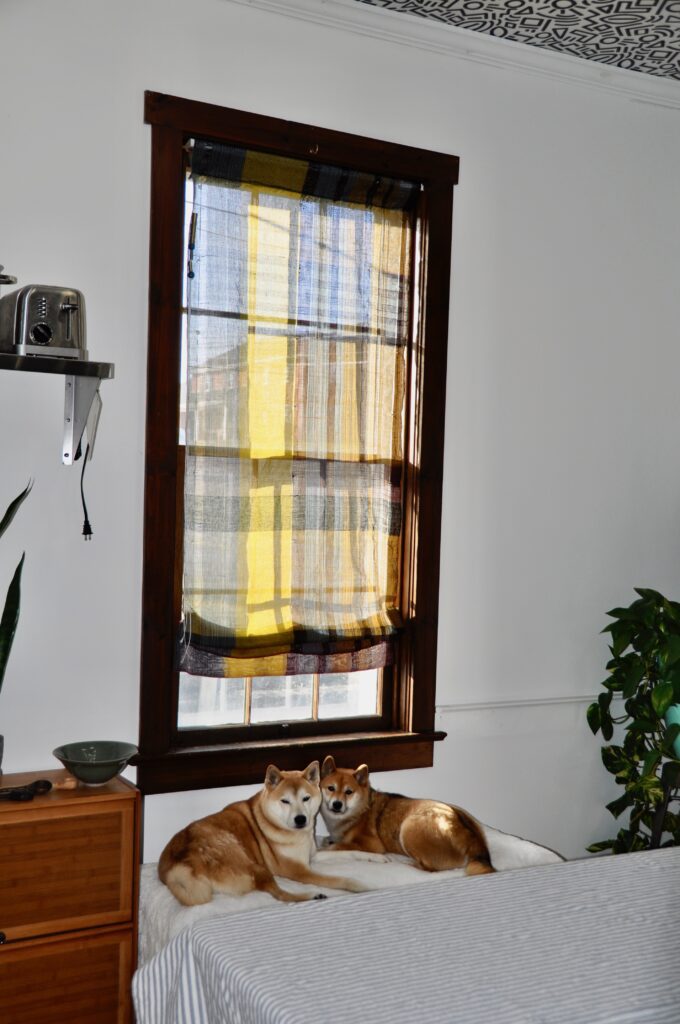How to Fall Back in Love with Making Art
Did you love drawing, sketching, painting, and spending endless hours creating, but now you find yourself dreading and even thinking about starting?
As kids, we often start coloring, cutting, and gluing because it’s fun. Our imagination runs wild, we get applause as we showcase our newest creations, and then we get older. We’re introduced to the “rules” of artmaking and begin to go through the process of class critiques and earning grades; often, at some point during this journey, we lose hold of the joy that prompted us to start creating.
After three years of not weaving, I decided that weaving fabric to create a Roman shade, something I’d never done before would be an excellent place to start, which sums up my creative process. While being sarcastic here, I’ve always loved creating functional objects, scarves, table runners, bowls, mugs, and books, ensuring that my way back into weaving had to be through creating something functional. I didn’t need another scarf, but I did need shades.
If you want to rediscover your love of creating, reenter creating through the same door where you started. If painting flowers was the thing that you loved to do, then paint flowers. And if that feels too hard, copy paintings of flowers, trace drawings of flowers, do anything other than not create flowers.
I first learned how to weave while studying art education in college. While I enjoyed the process, I didn’t have access to a loom after graduation. After earning a teaching salary for a few years and purchasing a home with my husband that had room for a weaving study, I found a used loom and bought it. Now that we’d transported this 36″ Leclerc floor loom to our home and wrangled it up to the second floor, it was time to figure out how to use it.

I pulled a new weaving book off my bookshelf, determined my pattern, and blissfully started dressing the loom. The pattern didn’t work.
I tried a few more times, but finally, in desperation, I did some Google searches attempting to understand WHY EVERYTHING I tried to create was coming out as a total mess. And then I saw the answer.
The book was on recall, as it was missing a few pages.
At this moment, I determined I was done with directions and weaving patterns and would make things up independently.
There were more logical responses than this, but it served me well over the next ten years as I designed, created, and sold hundreds of one-of-a-kind scarves.
The missing pages, wasted yarn, and countless failed attempts would have caused many to walk away from weaving and never return. But I’m stubborn and obsessed with creativity, and instead, I established constraints and started to design. I made many pieces I didn’t like, which is normal. I also made and sold a lot of pieces that I love. You have to get used to creating work you don’t like, reflect on what you learned, put it aside, and try again. If you expect to enjoy everything you make, you’re setting yourself up for disappointment and defeat.
My ability to weave without patterns or directions took time. It was a process of practice, experimentation, and observation. I was teaching myself how to listen to the materials and predict width by feel, placement on the warping peg, and the shrinking size of the cone of yarn.

I didn’t plan to stop weaving three years ago.
The yarn was already warped, prepared to go onto the loom, indicating that I intended to create something one day, and the next day, I walked away from the loom for three years. A long list of things likely contributed to this unplanned break, but that’s a long story for another day.
Three years away meant I couldn’t remember how much warp was needed by feeling it or where it landed on the peg. ( Most weavers count the threads, something that I never enjoyed, so I learned how to do it by sight and feel)
I couldn’t remember how to create one of my favorite patterns. It meant that I had to start over a few times. It meant that I didn’t pick the best fabric structure to support the Roman shade design.
It also meant a lot of fun, experimentation, and learning.
It meant healing, something I’ve often done while sitting at the loom, passing the shuttle back and forth. Most importantly, it meant remembering how much joy I find in creating.
If you’re trying to find your way back into creating, stop trying and sit down and do it. Do it right now.
Gather some supplies, set a timer for 15mins, and create. Do that every day; tell me if five days from now you’re having fun making again.
Roman Shade Project Details:
Constraints:
I allowed myself to buy minimal supplies, and those were the items that I couldn’t find anything that would work well as a substitute.
I purchased acrylic rings and cording.
Inspiration: Pojagi curtains allow light to flow into a space while creating privacy.
Pattern Tabby or plain weave
I watched this YouTube video to learn how to make a Roman shade, but I did not follow these instructions 100%; see above, where I mention that I am not likely to follow patterns. I’m also not a fan of following directions. I did not put a liner on my fabric; I wanted the light to shine through them. I also simplified the top attachment by making a pocket at the top of the curtain, sliding the attachment bar in, and screwing that into the window.
Yarn: Perle Cotton, a mix of 10/2 and 5/2
To reinforce the structure, as some of the weave was too loose and started to pull against the weight, I hand wove back into the fabric in some areas, and in others, I created woven patches that I sewed onto the fabric.
Related Reading:
The War of Art by Steven Pressfield